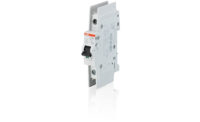Cryocoolers can be used to cool infrared sensors needed for the study of temperature variations in the atmosphere and the oceans. Such data is vital to a greater understanding of the ozone hole, global warming and long-range weather patterns.
The primary objective for flying the cryocooler in space is to determine its performance in a microgravity environment. A test of the cryocooler aboard a 1998 shuttle flight was inconclusive because of onboard battery problems.
The cryocooler is about 12.5 cm (five in.) long and weighs less than one kg (two lbs). The device's batteries, control electronics and onboard computer for data recording together weigh less than 100 kg (about 200 lbs).
The refrigerator uses oscillating gaseous helium to achieve a very cold temperature (minus 193 degrees C or minus 315 degrees F) without using cold moving parts. A secondary objective of the shuttle experiment is measuring the thermal conductance of the cryocooler stages (e.g., the cold head) over a wide temperature range in microgravity. Finally, the device's designers want to demonstrate the launch survivability and in-flight performance of a cryocooler that uses mostly commercial components. Source: National Institute Of Standards And Technology

